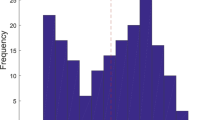Abstract
Brain functional network (BFN) analysis based on functional magnetic resonance imaging (fMRI) has proven to be a value method for revealing organization architectures in normal aging brains. However, a comprehensive comparison of different BFN methods for predicting brain age remains lacking. In this paper, we introduce a novel method to establish the BFN by using the Schatten-0 (\( S_0 \)) and \( \ell _0 \)-regularized low rank sparse representation (\({S_0}{{/}}{\ell _{{0}}}\) LSR) method. Moreover, the performance of different BFN methods in the brain age prediction with different feature extraction methods is evaluated. A support vector regression (SVR) is applied to the BFN data to predict brain age. Experimental results for resting state fMRI data sets show that compared with the Pearson correlation (PC), sparse representation (SR), low rank representation (LR), and low rank sparse representation (LSR) methods, the LSR method can achieve better modularity and predict brain age more accurately. The novel approach can enhance our understanding of the functional network of the aging brain.
Access this chapter
Tax calculation will be finalised at checkout
Purchases are for personal use only
Similar content being viewed by others
References
Sporns, O., Chialvo, D.R., Kaiser, M., et al.: Organization, development and function of complex brain networks. Trends Cogn. Sci. 8(9), 418–425 (2004)
Muetzel, R.L., Blanken, L.M.E., Thijssen, S.F., et al.: Resting-state networks in 6-to-10 year old children. Hum. Brain Mapp. 37(12), 4286–4300 (2016)
Vij, S.G., Nomi, J.S., Dajani, D.R., et al.: Evolution of spatial and temporal features of functional brain networks across the lifespan. Neuroimage 173(2018), 498–508 (2018)
Sole-Padulles, C., Castro-Fornieles, J., de la Serna, E., et al.: Intrinsic connectivity networks from childhood to late adolescence: effects of age and sex. Cogn. Neurosci. 17, 35–44 (2016)
Li, K., Guo, L., Li, G., et al.: Cortical surface based identification of brain networks using high spatial resolution resting state fMRI data. In: 2010 IEEE International Symposium on Biomedical Imaging: From Nano to Macro, pp. 656–659. IEEE (2010)
Lee, K., Tak, S., Ye, J.C.: A data-driven sparse GLM for fMRI analysis using sparse dictionary learning with MDL criterion. IEEE Trans. Med. Imaging 30(5), 1076–1089 (2011)
Li, X., Hu, Z., Wang, H.: Overlapping community structure detection of brain functional network using non-negative matrix factorization. In: Hirose, A., Ozawa, S., Doya, K., Ikeda, K., Lee, M., Liu, D. (eds.) ICONIP 2016. LNCS, vol. 9949, pp. 140–147. Springer, Cham (2016). https://doi.org/10.1007/978-3-319-46675-0_16
Qiao, L., Zhang, H., Kim, M., et al.: Estimating functional brain networks by incorporating a modularity prior. Neuroimage 141, 399–407 (2016)
Liu, G., Lin, Z., Yan, S., et al.: Robust recovery of subspace structures by low rank representation. Pattern Anal. Mach. Intell. 35(1), 171–184 (2013)
Donoho, D.L., Elad, M.: Optimally sparse representation in general (nonorthogonal) dictionaries via \(\ell _{{0}}\) minimization. Proc. Nat. Acad. Sci. 100(5), 2197–2202 (2003)
Brbic, M., Kopriva, I.: \(\ell _{{0}}\)-motivated low rank sparse subspace clustering. IEEE Trans. Cybern. 50(4), 1711–1725 (2020)
Mwangi, B., Hasan, K.M., Soares, J.C.: Prediction of individual subject’s age across the human lifespan using diffusion tensor imaging: a machine learning approach. Neuroimage 75(2013), 58–67 (2013)
Zhai, J., Li, K.: Predicting brain age based on spatial and temporal features of human brain functional networks. Front. Hum. Neurosci. 13(2019), 62 (2019)
Nooner, K.B., Colcombe, S., Tobe, R., et al.: The NKI-Rockland sample: a model for accelerating the pace of discovery science in psychiatry. Front. Neurosci. 6, 152 (2012)
Yan, C., Zang, Y.: DPARSF: a MATLAB toolbox for “pipeline” data analysis of resting-state fMRI. Front. Neurosci. 4, 13 (2010)
Combettes, P.L., Pesquet, J.C.: Proximal splitting methods in signal processing. In: Bauschke, H., Burachik, R., Combettes, P., Elser, V., Luke, D., Wolkowicz, H. (eds.) Fixed-Point Algorithms for Inverse Problems in Science and Engineering. SOIA, vol. 49, pp. 185–212. Springer, New York (2011). https://doi.org/10.1007/978-1-4419-9569-8_10
Boyd, S., Parikh, N., Chu, E., et al.: Distributed optimization and statistical learning via the alternating direction method of multipliers. Trends Mach. Learn. 3(1), 1–122 (2011)
Yu, Y.L.: Better approximation and faster algorithm using the proximal average. In: Advances in Neural Information Processing Systems, pp. 458–466 (2013)
Blumensath, T., Davies, M.E.: Iterative thresholding for sparse approximations. J. Fourier Anal. Appl. 14(5–6), 629–654 (2008). https://doi.org/10.1007/s00041-008-9035-z
Liang, J., Fadili, J., Peyré, G.: A multi-step inertial forward-backward splitting method for non-convex optimization. In: Advances in Neural Information Processing Systems, vol. 2, no. 5, pp. 99–110 (2016)
Rubinov, M., Sporns, O.: Complex network measures of brain connectivity: uses and interpretations. Neuroimage 52(3), 1059–1069 (2010)
Drucker, H., Burges, C.J.C., Kaufman, L., et al.: Support vector regression machines. In: Advances in Neural Information Processing Systems, vol. 9, pp. 155–161 (1997)
Chang, C.C., Lin, C.J.: LIBSVM: a library for support vector machines. ACM Trans. Intell. Syst. Technol. 2(3), 1–27 (2011)
Newman, M.E.J.: Modularity and community structure in networks. Proc. Natl. Acad. Sci. 103(23), 8577–8582 (2006)
Vergun, S., Deshpande, A.S., et al.: Characterizing functional connectivity differences in aging adults using machine learning on resting state fMRI data. Front. Comput. Neurosci. 7, 38 (2013)
Acknowledgments
This work was supported in part by the National Nature Science Foundation of China under Grant 61773114 and the Key Research and Development Plan (Industry Foresight and Common Key Technology) of Jiangsu Province under Grant BE2017007-3.
Author information
Authors and Affiliations
Corresponding authors
Editor information
Editors and Affiliations
Rights and permissions
Copyright information
© 2020 Springer Nature Switzerland AG
About this paper
Cite this paper
Han, H., Xiong, X., Yan, J., Wang, H., Wei, M. (2020). The Evaluation of Brain Age Prediction by Different Functional Brain Network Construction Methods. In: Yang, H., Pasupa, K., Leung, A.CS., Kwok, J.T., Chan, J.H., King, I. (eds) Neural Information Processing. ICONIP 2020. Lecture Notes in Computer Science(), vol 12534. Springer, Cham. https://doi.org/10.1007/978-3-030-63836-8_11
Download citation
DOI: https://doi.org/10.1007/978-3-030-63836-8_11
Published:
Publisher Name: Springer, Cham
Print ISBN: 978-3-030-63835-1
Online ISBN: 978-3-030-63836-8
eBook Packages: Computer ScienceComputer Science (R0)




